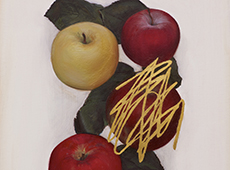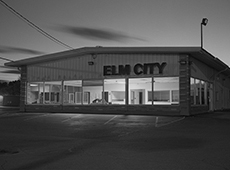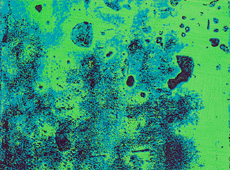The book that evolved from the discovery of these prints, “Eduard et Voulangis,” is one of the finest samples of an artist-in-residence, in this case, the artist’s own residence in Voulangis, just outside of Paris. Steichen would use this time that Greenberg called “a great artist’s most contemplative period” to evaluate, create, and innovate. Steichen would also declare himself clearly as a photographer by both burning his paintings in a bonfire and photographing a cup and saucer 1,000 times.
Steichen: Eduard et Voulangis: The Early Modernist Period 1915 – 1923
Published by Lumiere Press, 2011
Essay by Michael Torosian
Introduction by Howard Greenberg
Edition of 250
Sometimes it takes nearly a century for photographs to be shared with the world, even ones made by one of the most influential photographers in the history of the medium. That was the case for some of Edward Steichen’s prints made during his “early modernist period,” from 1915-1923.
In 2008, Joanna Steichen, Edward Steichen’s widow, shared eight strikingly beautiful early prints with Howard Greenberg, owner of the Howard Greenberg Gallery and representative for the Edward Steichen estate. Taken out of a safety deposit box and presented in an envelope, Mr. Greenberg held before him, “an astonishing bouquet of experiments in toning and multiple-printing processes.”
Michael Torosian of Lumiere Press and Howard Greenberg had talked, over a decade before, about publishing a book of Steichen’s work showing his transition from Pictorialist to Modernist. However, neither felt they had the appropriate examples to move forward with the project—until they laid their eyes on the prints Joanna Steichen revealed. These photographs provided the evidence they needed to tell this story of transition from Steichen the painter, to Steichen the photographer.
The book that evolved from the discovery of these prints, Eduard et Voulangis, is one of the finest samples of an artist-in-residence, in this case, the artist’s own residence in Voulangis, just outside of Paris. Steichen would use this time that Greenberg called “a great artist’s most contemplative period” to evaluate, create, and innovate. Steichen would also declare himself clearly as a photographer by both burning his paintings in a bonfire and photographing a cup and saucer 1,000 times.
The foundation of the book and of Steichen’s transformative period lies in the image, Three Pears and an Apple. Despite its literal title, the complex geometry of the print itself affords the full range of experience in a photograph: curiosity, exploration, revelation, and ultimately, introspection. It is an image one can get lost in, continually returning, perplexed and intrigued by its deceptively simplistic veneer. In his accessible essay in the book, Torosian says of that particular image, “Like bodies brought together by gravitational force the elegance appears inevitable, the simplicity preordained.”
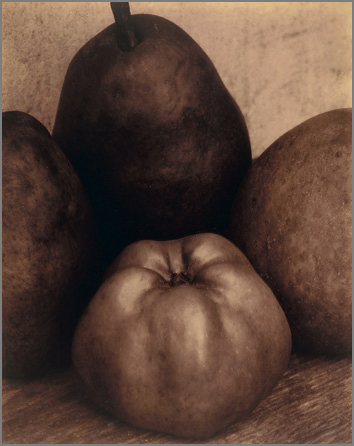
Edward Steichen, “Three Pears and an Apple.” c. 1921, Courtesy Lumiere Press.
The images in the book are printed richly, as if the limitations of “color space” didn’t exist, some with warm tones that seem unachievable, others with such subtle variances in deep shadows that the eye becomes lost in geometries within geometries. One initially absorbs the overall composition, but then, steadily consumes the nooks of detail, the marks, the subtle shifts in tone—an exploration of color, line and form that would be impossible without the careful and subtle printing achieved here in extraordinary four-color offset lithography reproductions.
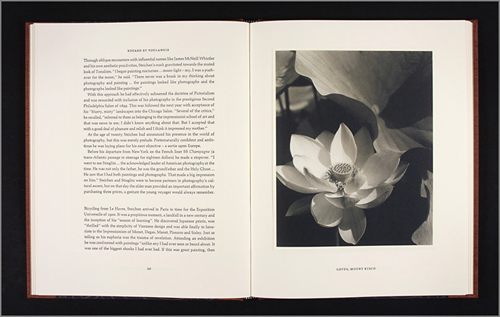
Courtesy Lumiere Press.
In his introduction, Greenberg describes Steichen as an “alchemist,” creating prints that were, “unusual and unique in ways that I had never encountered, in ways that I didn’t think were possible.“ Steichen’s experimentation in printing with platinum, gum-bichromate and ferroprussiate, coated in multiple combinations, enable these prints, and ultimately, the book, to read like an unencumbered exploration in printmaking. In addition to the beautifully rendered offset reproductions, Torosian took great care in selecting the other materials and printing techniques that would be employed, a delicate balance to achieve when working with such subtle imagery. As Torosian describes, he wanted the cover to be, “somewhat decorative” with a pattern that referenced the rhythm in the image Wheelbarrow with Flower Pots. The warm tone and soft tactile quality of the handmade papers by St. Cuthbert Mill and Papeterie St. Armand along with the delicate letterpress printing of Zapf’s original cutting for lead casting of the Palatino typeface complement the images presented in the book. The book sits comfortably in the hand, and a subconscious awareness slowly builds, informing the viewer that each design decision references another. There are no loose ends—everything is considered with thought and respect to the art exhibited.
My only unresolved question is whether Steichen’s experiments should be presented less formally. When looking at the prints and reading the text, I imagine clothing lathered and stained in various chemicals. But the book, presented as ‘perfectly’ executed as it is, in a subliminal way contradicts the celebration of the organic process of experimentation that can bring at times, imperfection or even failure. It is, however, not a long-lived point of contention.
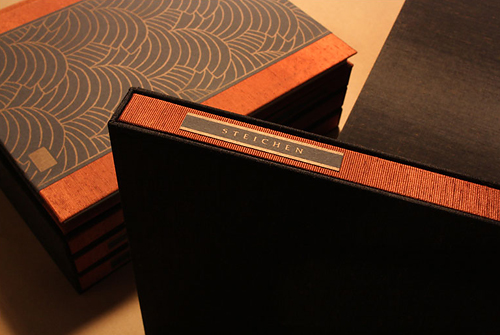
Courtesy Lumiere Press.
I am a photographic artist who was raised in the darkroom by great printmakers like George Tice, but has lived within the confines of digital machinery for nearly a decade. While I seek out those who, in Steichen’s footsteps, are pushing the boundaries of photographic printmaking, I feel that experimentation is something not always celebrated, but more often hidden, cloaked in labels of an artist as ‘inconsistent’ or ‘lacking a clear vision.’ I can’t think of a contemporary book that so openly reveres experimentation, as this book does.
I have felt for some time that while documentary photography answers questions, successful fine art raises them. There must also be proof of craft, of effort, and an investment from the artist. As Greenberg describes, “These are works of intellectually ambiguous abstraction – hypothesis on sensitized paper.” For me, they offer what great art should, a safe place to revel in the unknown.
For more information on this title, visit Lumiere Press.
Subscribe to Tilted Arc
If you like this story, please consider subscribing. We are sticklers for privacy.
We will never sell or share your e-mail address.

